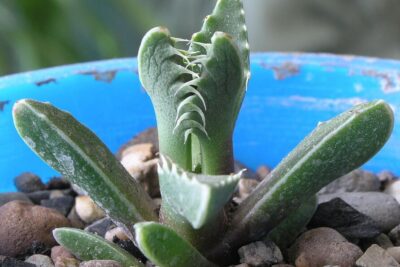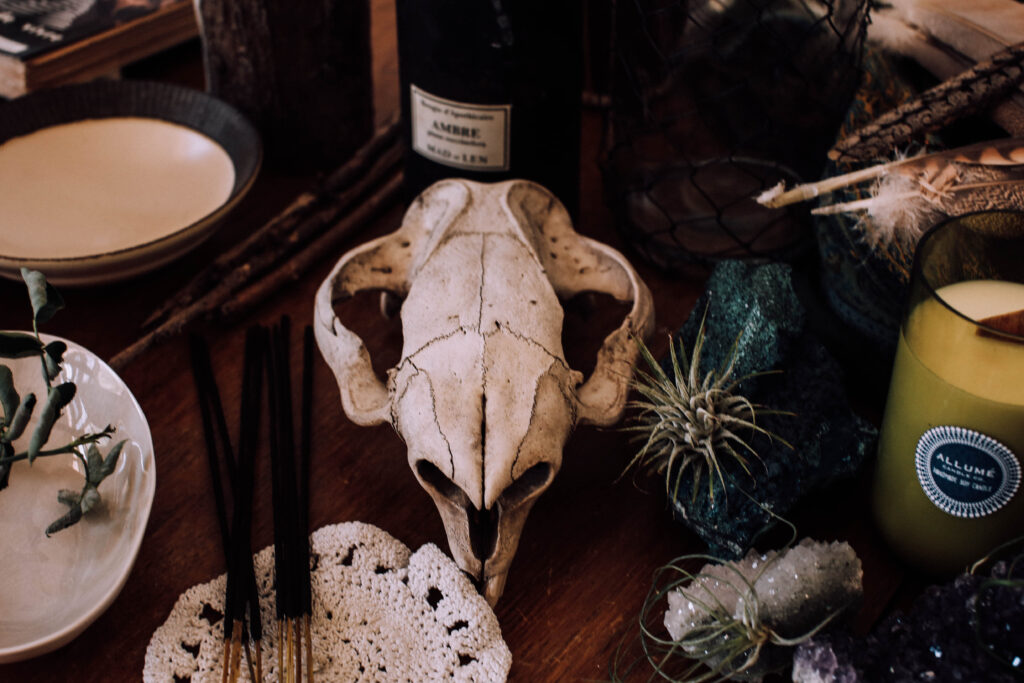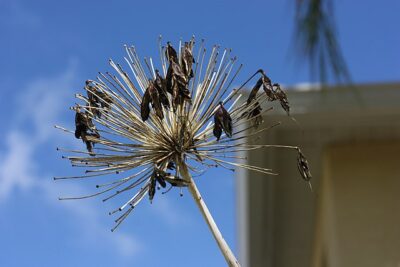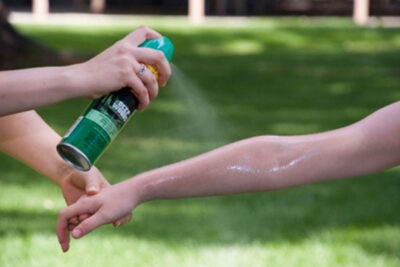
Understanding the Factors behind Succulent Death Blooms

Succulents are popular plants known for their unique and attractive appearance, as well as their ability to thrive in arid conditions. However, despite their reputation for being low-maintenance, succulents can sometimes experience what is known as "death blooms". These are sudden, rapid declines in health that can result in the death of the plant. Understanding the factors behind succulent death blooms is crucial for succulent enthusiasts and gardeners, as it can help prevent these occurrences and maintain healthy and thriving plants.
We will delve into the various factors that contribute to succulent death blooms. We will explore the importance of proper watering techniques, the role of sunlight and temperature, as well as the significance of soil quality and drainage. Additionally, we will discuss common mistakes to avoid, such as overwatering and inadequate light exposure. By gaining a comprehensive understanding of these factors, readers will be equipped with the knowledge and tools necessary to care for their succulents and prevent death blooms.
- Provide proper drainage for your succulent plants
- Avoid overwatering your succulents
- Make sure your succulents receive enough sunlight
- Use a well-draining potting mix specifically designed for succulents
- Protect your succulents from extreme temperatures
- Avoid overcrowding your succulents in one pot
- Keep an eye out for signs of pests and treat them promptly
- Prune your succulents regularly to promote healthy growth
- Allow your succulents to have a dormant period during winter months
- Avoid using chemical fertilizers and instead opt for organic alternatives
- Frequently Asked Questions
Provide proper drainage for your succulent plants
One of the key factors contributing to the death of succulent plants is improper drainage. Succulents, like cacti, have adapted to survive in arid environments by storing water in their leaves, stems, or roots. Therefore, they are highly susceptible to root rot if their soil remains waterlogged.
To provide proper drainage for your succulents, it is crucial to choose the right type of soil. A well-draining soil mix specifically formulated for succulents is readily available in nurseries or can be easily prepared at home. This type of soil allows excess water to flow through, preventing it from saturating the roots.
Additionally, consider using a container with drainage holes at the bottom. These holes allow excess water to escape, ensuring that the soil does not become waterlogged. If your favorite decorative pot doesn't have drainage holes, you can create them yourself using a drill or by placing a layer of pebbles at the bottom to facilitate water drainage.
Remember, overwatering is one of the most common mistakes made by succulent enthusiasts. To avoid it, water your succulents thoroughly but infrequently. Wait until the soil is completely dry before watering again, as succulents prefer to be slightly dehydrated rather than overwatered.
 Can a Death Bloom Succulent Be Saved or is it Too Late?
Can a Death Bloom Succulent Be Saved or is it Too Late?Key Points:
- Choose a well-draining soil mix specifically formulated for succulents
- Use containers with drainage holes to prevent waterlogging
- Water succulents thoroughly but infrequently, allowing the soil to dry out between waterings
Avoid overwatering your succulents
One of the most common reasons behind succulent death blooms is overwatering. It's important to understand that succulents have adapted to survive in arid environments, storing water in their leaves, stems, or roots. Overwatering can lead to root rot and other fungal diseases, ultimately causing the plant to wither and die.
To prevent overwatering, follow these guidelines:
- Check the soil moisture: Before watering your succulent, make sure to check the moisture level of the soil. Stick your finger about an inch deep into the soil; if it feels dry, it's time to water. However, if the soil feels damp or moist, hold off on watering until it dries out.
- Use well-draining soil: Succulents require soil that allows excess water to drain quickly. Avoid using heavy garden soil or clay-based mixes, as they retain water for longer periods. Instead, opt for a well-draining succulent or cactus soil mix, which contains materials like perlite or sand to improve drainage.
- Water sparingly: Unlike other houseplants, succulents don't require frequent watering. Allow the soil to dry out completely between waterings, as this mimics their natural habitat. Depending on the climate, succulents typically need watering every 1-2 weeks.
- Adjust watering based on season: Succulent watering needs can vary depending on the season. During the winter months, when succulents enter a dormant phase, they require less water. Reduce watering frequency and only provide enough moisture to prevent shriveling. In contrast, during the active growth period in spring and summer, you may need to water more frequently.
By following these watering guidelines, you can help prevent succulent death blooms caused by overwatering. Remember, it's better to underwater than overwater your succulents, as they have adapted to survive in challenging conditions.
Make sure your succulents receive enough sunlight
One of the most common reasons for succulent death blooms is a lack of proper sunlight. Succulents are plants that thrive in bright, indirect sunlight. Without enough sunlight, they are unable to undergo photosynthesis, leading to weakened growth and eventually death.
 Understanding the Cause: Why is My Succulent's Base Turning White?
Understanding the Cause: Why is My Succulent's Base Turning White?To ensure that your succulents receive enough sunlight, it is crucial to place them in a location where they can get at least 6 hours of sunlight per day. South-facing windows are often the best choice, as they receive the most intense sunlight throughout the day. If you don't have access to ample sunlight indoors, consider using grow lights specifically designed for plants.
Tips:
- Rotate your succulents regularly to promote even growth, as they tend to lean towards the light source.
- Monitor the intensity of sunlight, as some succulents can get sunburned if exposed to intense, direct sunlight for prolonged periods.
By ensuring that your succulents receive enough sunlight, you can greatly reduce the risk of death blooms caused by light deprivation.
Use a well-draining potting mix specifically designed for succulents
When it comes to keeping succulents alive and thriving, one of the most important factors to consider is the type of potting mix you use. Succulents require a well-draining soil that allows excess water to escape easily. Using a potting mix specifically designed for succulents is crucial to their survival.
A well-draining potting mix for succulents typically consists of a combination of ingredients such as sand, perlite, and pumice. These components help create air pockets in the soil, allowing water to flow through and preventing it from pooling around the roots.
Additionally, using a potting mix that has a high organic matter content can lead to succulent death blooms. Organic matter retains moisture and can cause the roots to rot if the excess water is not drained properly. Therefore, it is essential to opt for a mix that is low in organic matter and promotes good drainage.
Remember, when repotting your succulents, ensure that the new potting mix is well-draining and specifically formulated for succulents. This will provide your plants with the ideal growing conditions and help prevent succulent death blooms caused by poor soil drainage.
 Causes of Holes in Succulent Leaves: A Comprehensive Guide
Causes of Holes in Succulent Leaves: A Comprehensive GuideProtect your succulents from extreme temperatures
One of the key factors that can lead to the death of succulents is exposure to extreme temperatures. Succulents are known for their ability to thrive in dry and arid conditions, but they are not immune to the effects of extreme heat or cold.
In hot climates, succulents can become overheated and dehydrated if they are not provided with enough shade or water. The intense heat can cause the leaves to wilt and turn brown, eventually leading to the death of the plant. It is crucial to provide shade for your succulents during the hottest parts of the day and ensure they are watered adequately to prevent dehydration.
On the other hand, succulents can also suffer from cold temperatures. Frost and freezing temperatures can damage the cells of the plant, causing them to become mushy or discolored. It is important to protect your succulents from frost by bringing them indoors or providing them with proper insulation during the winter months.
Tips to protect your succulents from extreme temperatures:
- Place your succulents in a location with partial or filtered sunlight during the hottest parts of the day.
- Water your succulents regularly, especially during heatwaves, to prevent dehydration.
- During the winter months, bring your succulents indoors or provide them with insulation to protect them from frost.
- Consider using frost covers or blankets to shield your succulents from freezing temperatures.
By following these tips, you can protect your succulents from the detrimental effects of extreme temperatures and ensure their longevity and health.
Avoid overcrowding your succulents in one pot
When it comes to succulent care, one of the most common mistakes that beginners make is overcrowding their succulents in one pot. While it may be tempting to create a lush arrangement with multiple varieties, overcrowding can actually lead to the death of your succulents.
 Safe and Kid-Friendly: Non-Toxic Succulents for Pets and Children
Safe and Kid-Friendly: Non-Toxic Succulents for Pets and ChildrenSucculents require proper airflow and space for their roots to grow and thrive. When too many succulents are crammed together in a small container, they can compete for resources such as sunlight, water, and nutrients. This overcrowding can lead to stunted growth, root rot, and ultimately, the death of your precious plants.
Instead, it is important to give each succulent enough space to grow. This allows them to receive adequate light and nutrients, and also prevents the spread of diseases and pests. When choosing a pot for your succulents, make sure it has drainage holes to avoid waterlogging, which can further contribute to their demise.
By taking the time to properly space out your succulents, you not only ensure their survival but also create a visually appealing arrangement. Remember, less is more when it comes to succulent potting, and giving them room to breathe will help them thrive.
Keep an eye out for signs of pests and treat them promptly
One of the common reasons behind succulent death blooms is the presence of pests. Pests can quickly infest your succulents and cause significant damage if not addressed promptly. Therefore, it is crucial to keep an eye out for signs of pest infestation and take immediate action to treat them.
Some telltale signs of pests on succulents include discolored leaves, webbing, tiny holes, or sticky residue on the plant's surface. If you notice any of these signs, it is important to inspect your plants thoroughly to identify the type of pest causing the problem. Common pests that can affect succulents include mealybugs, aphids, spider mites, and scale insects.
Mealybugs: Mealybugs are small white insects that resemble tiny cotton balls. They often congregate in the leaf axils or on the undersides of leaves. To treat mealybugs, you can manually remove them using a cotton swab dipped in rubbing alcohol or use an insecticidal soap.
 Causes of Shriveled and Wrinkled Leaves in Succulents
Causes of Shriveled and Wrinkled Leaves in SucculentsAphids: Aphids are small, soft-bodied insects that can be green, black, or brown. They usually cluster on new growth or the undersides of leaves, sucking out the sap from the plant. You can control aphids by spraying a mixture of water and dish soap onto the affected areas or using neem oil.
Spider mites: Spider mites are tiny arachnids that can be red, brown, or yellow. They are known for creating fine webs on the plant's surface. Spider mites thrive in dry conditions and can cause extensive damage to succulents. To eliminate spider mites, you can spray the affected plants with a mixture of water and insecticidal soap.
Scale insects: Scale insects appear as small, raised bumps on the plant's stems or leaves. They can be brown, black, or tan in color. Scale insects feed on the plant's sap and can cause stunted growth and leaf yellowing. To treat scale insects, you can scrape them off with a toothbrush or apply horticultural oil to suffocate them.
Regularly inspecting your succulents and taking swift action against pests will help prevent succulent death blooms caused by infestations. Remember to always follow the instructions on any pest control products you use and monitor your plants to ensure the pests are eradicated.
Prune your succulents regularly to promote healthy growth
One of the key factors in ensuring the longevity of your succulents is regular pruning. Pruning is the process of removing any dead or dying leaves, stems, or flowers from your plants. This not only helps in maintaining the overall appearance of your succulents but also promotes healthy growth.
When succulents are left unpruned, they can develop what is commonly known as "death blooms." These are tall, elongated stems that emerge from the center of the plant, often with small, weak leaves. Death blooms can be visually unappealing and can also put a strain on the plant's resources, diverting energy away from other areas of growth.
 Succulent Health: Healthy vs Unhealthy - Spot the Difference
Succulent Health: Healthy vs Unhealthy - Spot the DifferenceBy pruning your succulents regularly, you can prevent the occurrence of death blooms. It allows the plant to focus its energy on developing new leaves and stems, resulting in a more compact and aesthetically pleasing appearance.
Here are a few tips to keep in mind when pruning your succulents:
- Use clean and sharp tools: Before pruning, make sure your tools are clean and sharp. This helps in preventing the spread of diseases and ensures clean cuts, which promote faster healing.
- Identify dead or dying parts: Carefully inspect your succulents and identify any dead or dying leaves, stems, or flowers. These are the parts that need to be pruned.
- Trim at an angle: When removing dead leaves or stems, trim them at an angle to prevent water from pooling on the cut surface, which can lead to rotting.
- Leave a small stub: When pruning off larger stems or branches, leave a small stub to minimize the risk of rotting and allow for potential regrowth.
Remember, pruning is an ongoing process and should be done regularly to maintain the health and appearance of your succulents. By taking the time to prune your plants, you can prevent the occurrence of death blooms and ensure that your succulents thrive for years to come.
Allow your succulents to have a dormant period during winter months
One of the key factors in preventing succulent death blooms is to ensure that your succulents have a dormant period during the winter months. Succulents are adapted to survive in arid climates, and they naturally go through a period of dormancy during the colder months. During this time, their growth slows down, and they conserve energy to survive harsh conditions.
To mimic their natural habitat, it is crucial to provide your succulents with a period of rest during winter. This means reducing watering and avoiding fertilization. Overwatering during this time can lead to root rot and other problems, as succulents are more susceptible to moisture-related issues when they are dormant.
Additionally, it is essential to place your succulents in a location with lower light levels during winter. Most succulents prefer bright light, but during their dormant period, they require less direct sunlight. Too much light during this time can cause stress and ultimately lead to death blooms.
 Understanding the Factors Behind Brown Stem in Succulents
Understanding the Factors Behind Brown Stem in SucculentsBy providing your succulents with a proper dormant period, you are allowing them to recharge and prepare for the upcoming growing season. This period of rest is essential for their overall health and longevity.
Remember, each succulent species may have slightly different requirements for their dormant period. It is vital to research the specific needs of your succulents to ensure you are providing them with the right conditions.
Avoid using chemical fertilizers and instead opt for organic alternatives
When it comes to caring for succulents, one of the most common mistakes that can lead to their demise is the use of chemical fertilizers. While these fertilizers may promise quick and impressive results, they often contain high levels of salts and other chemicals that can be harmful to succulents.
Instead, it is highly recommended to opt for organic alternatives when fertilizing your succulents. Organic fertilizers, such as compost or worm castings, are rich in nutrients and promote healthy growth without causing any harm to the plants.
Organic fertilizers not only provide essential nutrients to the succulents but also improve the soil structure and promote beneficial microbial activity. This, in turn, enhances the overall health and vigor of the plants, making them more resistant to diseases and pests.
Furthermore, organic fertilizers release nutrients slowly over time, ensuring a steady and balanced supply for the succulents. This prevents the risk of over-fertilization, which can burn the roots and lead to irreversible damage.
Tip: Always follow the instructions provided on the organic fertilizer packaging to ensure proper dosage and application.
 Troubleshooting: Is My Succulent Dying from the Bottom Up?
Troubleshooting: Is My Succulent Dying from the Bottom Up?Frequently Asked Questions
1. What are succulent death blooms?
Succulent death blooms refer to the phenomenon where a succulent plant produces a large number of flowers before ultimately dying.
2. Why do succulents experience death blooms?
Death blooms in succulents are often triggered by stress factors such as age, overwatering, lack of sunlight, or pest infestations.
3. Can succulent death blooms be prevented?
While it is difficult to prevent succulent death blooms completely, you can minimize the risk by providing optimal care, including proper watering, adequate sunlight, and regular pest control.
4. What should I do if my succulent is experiencing a death bloom?
If your succulent is going through a death bloom, it is important to focus on preserving the plant's energy. Remove any dead flowers or buds and ensure the plant receives the necessary care to recover.
If you want to read more articles similar to Understanding the Factors behind Succulent Death Blooms, you can visit the Pests and Diseases category.






You Must Read